Croton, also known as the “garden croton”, is a native plant in the tropical forests of Southeast Asia as well as Oceana. It can grow up to 20 feet tall in the wilds. When you grow the croton plant inside, it will stay a lot smaller.
The croton plant goes by the scientific name of Codiaeum Variegatum. The glossy, leathered leaves of the Codiaeum Variegatum are colorful by the presence of anthocyanin in the leaf. The linear and lanced shape of an oval and lobed-shaped leaves are 4 to 6 inches in size, depending upon the croton varieties.
In the beginning, croton will start losing its foliage in its new home. But once the Codiaeum variegatum adjusts, it will flourish beautifully.
Croton Varieties
There is a wide assortment of croton varieties that you can grow indoors as well as outdoors. These croton plant varieties come in shades of different colors such as red, yellow, purple, bronze, pink, and orange. This plant is one of the most popular tropical plant species with its diverse range of selection and croton varieties available. Choosing your favorite croton from its diverse range is quite hard.
It is the reason we put together this list of best croton plant varieties (from more than 100 croton plant varieties) for your green-thumb collection. You can get the croton plant from online stores if they are not available in your favorite nursery.
Croton Tiglium
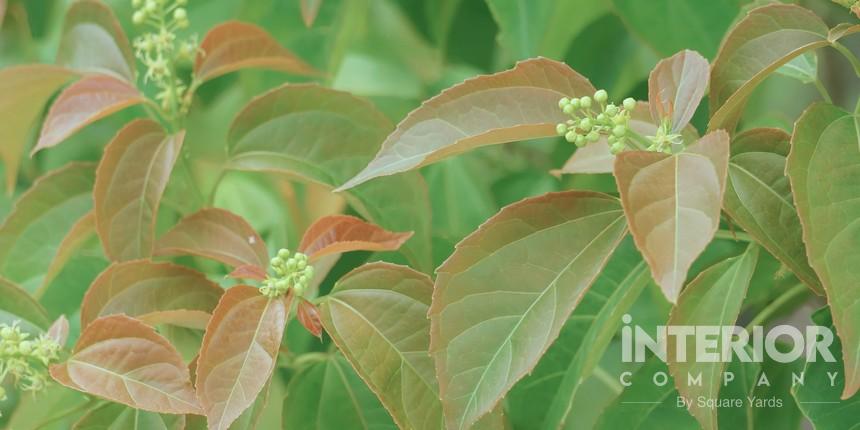
This croton plant is also known as Purging Croton. It is widely used in the world of Ayurvedic medicine to treat a number of diseases. This croton plant has high toxicity and is only used in advisable dosages by doctors. The toxicity of Croton Tiglium will get detoxified by adding cow milk.
It is one of the most famous Codiaeum variegatum well known for its toxicity. It is advisable to keep croton tiglium away from the reach of kids and animals if you want to keep this plant in your garden or home. Also, plant croton tiglium in well-drained soil in an area with adequate sunlight to avoid the fading of colors.
Croton Petra
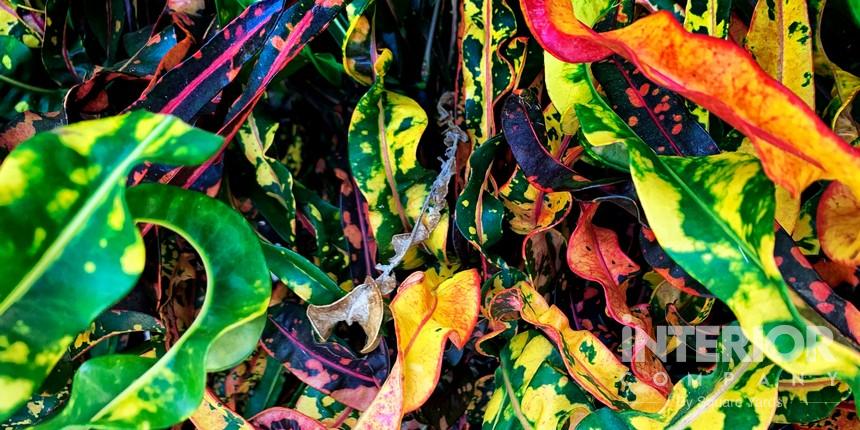
Croton Petra goes with the scientific name Codiaeum Variegatum Petra with a burst of colors on its deep green croton leaves. This evergreen shrub prefers hot and humid weather to grow. It needs special care and attention to stay healthy in all the weather. Also, to make it grow healthily, it is important to plant it in well-drained soil. The soil should be rich in humus.
Plant the croton petra in a pot with holes that provide good drainage. This croton plant needs at least six to eight hours of indirect sunlight every day. Protect the croton from direct sunlight as it can cause sunburns.
Also, re-pot the croton petra if planting indoors every two years to encourage healthy growth. Allow the soil to dry out in between the watering sessions. And maintain a consistent temperature from 65 degrees Fahrenheit to 80 degrees Fahrenheit.
This croton can cause skin diseases and an upset stomach. So, it is important to keep it in a place away from children and pets. You need to keep an eye on this croton plant for pests like fungus, mites, scales, and whiteflies.
Mammy Croton
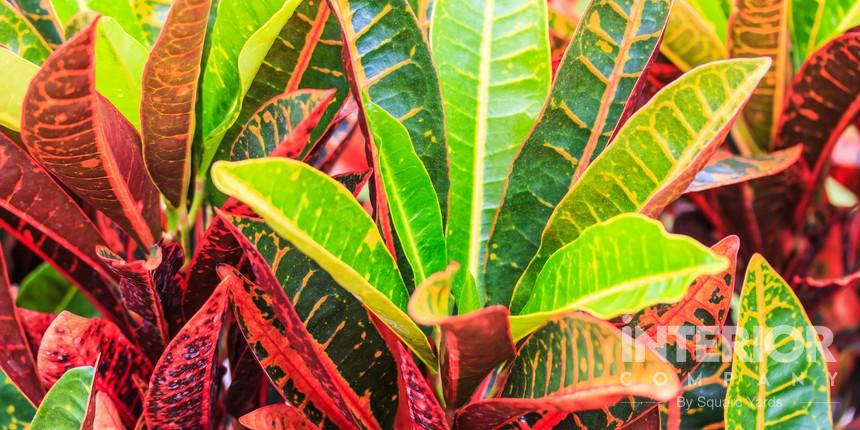
With the botanical name, Codiaeum Variegatum ‘Mammy’ is one of the best and our favorite classic croton varieties. It spreads up to 2 feet wide and grows 42 inches tall making it one of the smallest Codiaeum genus cultivators.
It has shiny, leathery, large, and thick leaves. The croton leaves are about eight inches in length and one inch wide. These croton leaves have an upright, twisting, and curling growth habit that adds a touch of texture and dimensions. Mammy croton leaves have a wide variety of display colors that include yellow, pink shades of red, and orange.
Keep this plant away from the scorching sun. Some leaves’ color needs full light, while the others may need partial light. Be sure to provide them with some protection from the direct scorching sunlight. Make sure to place them in a high humidity setting and never let them dry out. Keep the soil moist, not soggy with a humidity of between 40% to 80%. It is easy to grow even if you keep the croton plant indoor.
Banana Croton
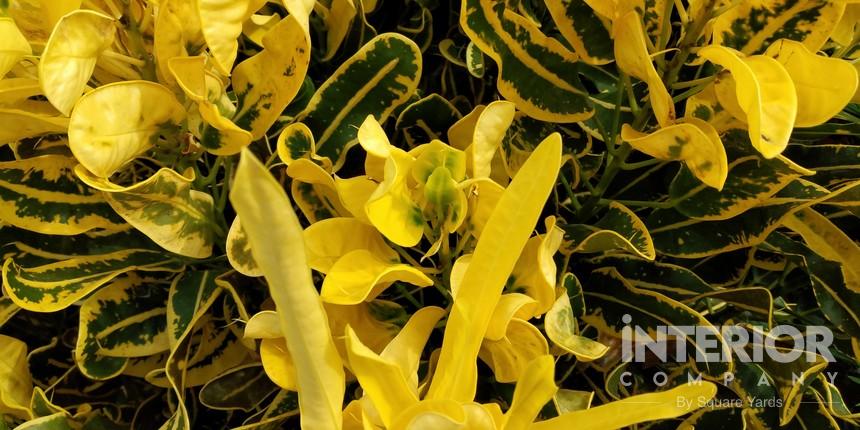
It is a bright tropical plant growing in popularity for homes. The amount of sunlight the banana croton plant will receive is directly proportional to the color intensity of its thin leaves. They grow into shrubs in warm, tropical locations but stay relatively small as croton plants indoor.
Keeping the croton plant indoors near bright and direct sunlight will be fruitful and bring a touch of greenery to the place. It will give a beautiful color intensity of green and yellow to the croton leaves. It also needs a consistent water schedule for growth. Wait for the soil to dry out before watering the plant.
The leaves are in the shape of a thin, unripe banana, as the name suggests. This plant is dwarf croton as it grows out a maximum of 3 or 4 feet in the outdoor environment.
Zanzibar Croton
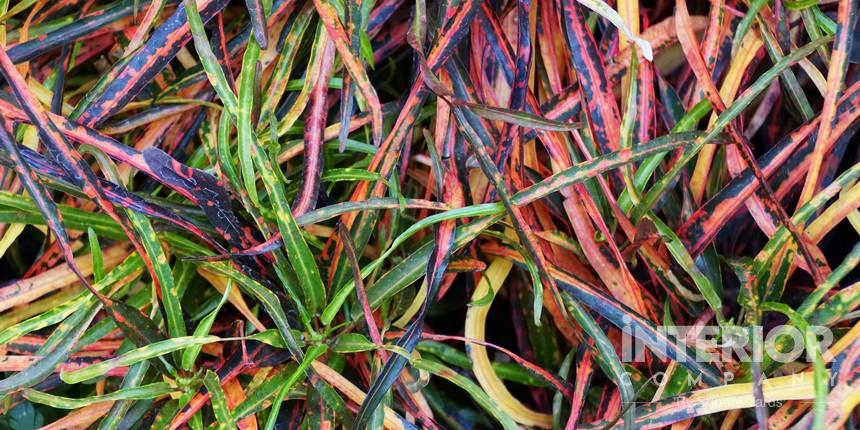
Zanzibar Croton almost looks like grass because of its slender and long leaves. The only factor that differentiates the plant from grass is the color of its leaves. The croton leaves are usually in the shades of orange, red, and purple. If a part of the plant dies, the roots help them to grow back. But this plant will not survive cold conditions.
This plant is a perfect choice if you are on a lookout for contrast to the broad leaves with its plant siblings inside your home. The narrow leaf has the same texture as grass just like its appearance. The croton plant needs a bright light for growth. It can grow up to 5 feet outdoors and 2 to 3 feet in the indoor environment.
The crotons are not known for their flowers. But Zanzibar produces insignificant croton flower tiny in size. It makes the croton flower look more like berries. Keep the soil moist in spring and summers, during the growing stage of the Zanzibar plants. Never make the mistake of keeping the soil wet as it can rot the root of the plant.
The foliage will start looking droopy and wilted when it needs watering. Also, the Zanzibar needs no fertilizing in winters.
Gold Dust Croton
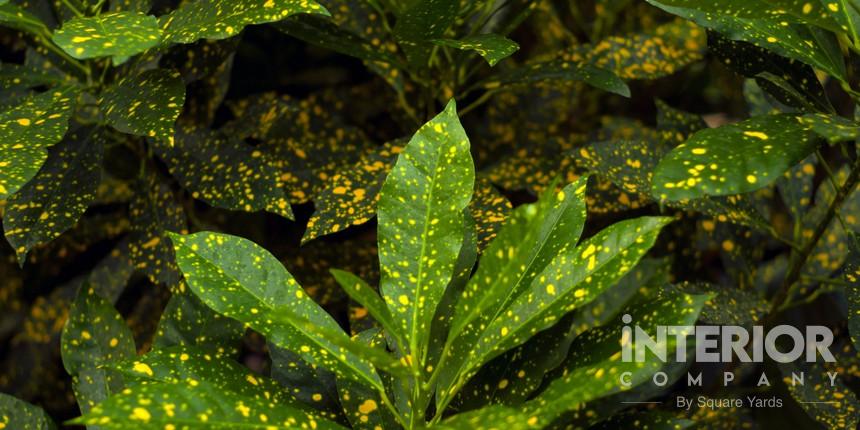
Gold Dust is one of the most popular croton for outdoor landscapes. It can also grow well indoors in the right living conditions. It has bright and beautiful foliage with yellow spots on its narrow, green leaves. It is the best croton plant indoor that works as an air purifier.
This plant does well when grouped together and is also a slow-growing croton plant. It can grow up to 3 feet tall, making it the right choice of croton varieties for your living room. This plant needs lots of indirect sunlight and well-drained soil with perlite and sphagnum moss for healthy growth. Water it daily until the soil is damp and feed with liquid slow fertilizer during the spring season.
Try to cut back the dead croton leaves as necessary to maintain the health and look of stems. Re-pot Gold Dust croton during the spring season with proper drainage holes.
Oakleaf Croton

It is a tree-like croton plant that has oak-shaped leaves that are red and green in color. The croton leaves are thick and leathery that can grow in yellow, red, green, or orange in color. This plant has a unique variation from the normal crotons with a beautiful and elegant look.
It can grow well in bright, direct sunlight and in well-drained potting soil. Oakleaf needs regular watering to keep the soil moist, not soaked. It can grow up to 24 inches tall. It has some toxicity so you should keep it out of reach and places that can harm humans and animals.
Purple Croton Plant

Purple Croton Plant is a beautiful purple bell plant with show-stopping, narrow leaves. The leaf has a variety of colors that includes shades of green and yellow along with a greenish-purple cupped tip to an inch or beyond. The cupped tip is supported by a thin extension of the leaf midrib.
You do not need to worry about planting it right away. It makes the croton plant indoor easy to root and share. You can just simply keep it in a bucket filled with water (up to half an inch) and move it to a shady location. Hence, you receive a lot of time to decide the place for the plant.
Purple Croton Plant enjoys well-drained, general potting soil mix in 8 inches to 10 inches wide pots. Spray the fertilizers tri-annually, a few inches away from the base to make it grow at the right rate.
Croton Plant Indoor Benefits
Yes, you can keep the croton inside your home. It can make a great addition to the interiors of your home. But along with making your home beautiful, it can keep you healthy too. Once you detoxify the plant, you can use it as a medicinal plant that can have a number of health benefits.
Some croton plants have medicinal properties that are used to treat a number of problems such as skin issues (itching, eczema, and carbuncles), cold, fever, digestive problems (diarrhea, nausea, dysentery).
It is a plant that has the properties of treating cancer. The cytocidal effect of the croton seeds helps in disrupting the cancer cells. It also relieves intestinal parasites like Schistosomiasis.
It can also help in purifying the air of your place. Some of the croton plants are great air purifiers and can help you to breathe in the fresh air.
Croton Plant Outdoor Benefits
Garden croton or croton, whatever you wish to call them, will make your garden look beautiful. But have you ever wondered that it can also provide your garden with benefits, such as matching the vibe of other plants by casting its colorful appearance?
These plants can save the soil layer of your garden. The garden croton prevents soil erosion by preventing the removal and detachment of soil particles. You can use these plants for garden designing by including them in different placements such as feature plants, mixed border plants, or more.
Croton Plant Lifespan
We all want our plants to live long. But if you really wish to keep them healthy for a long time, you need to understand the different care techniques and requirements for croton plants that will keep your plants happy and healthy.
The average lifespan of croton is a little more than two years. But with the proper care and fulfilling their requirements, they can tend to live more. For this, provide them with the right fertilizer, an adequate amount of water, and proper light according to their requirements. You will be glad about the response of croton plants after matching their requirements.
How To Make Croton Bushier?
Is your croton leggy? Do you wish to make them bushier and beautiful? Here are a few tips that you can follow to make them look bushier.
- Feed them with the right kind of fertilizers.
- Give them plenty of water.
- If it grows vigorously, cut back the vigorous growth.
- You can even lop off the croton plant from the bottom leaves to stop the vigorous growth.
- Keep croton in a container if planted indoors and pinch it on a regular basis if planted outdoors.
Your croton plants can be bushier if you take care of them properly. The above-mentioned ways will not only make the plants bushier but will also keep them healthy for more than their expected lifeline.
Propagating Croton
The crotons can get propagated in a variety of ways. It can get propagated from stem leaves, air layering, root cutting, and seeds.
Propagation By Croton Stem Leaves
Plant a single stem leaf in the right potting soil with a little amount of water (you can also leave the stem leaf in water). Keep this pot in desired conditions required for the growth of that particular croton, you wish to grow. After a while, you will see leaves popping out from the soil.
Propagating By Root Cutting
When you wish to propagate the croton through root cutting, make sure that the roots are healthy. Then put out a root from the bottom. Put the roots in the soil, appropriate for the croton, and leave it in the required conditions for proper growth.
Propagation By Air Layering
Select the mother plant for air-layering, then wound the stem to the point where you want roots to form. It should get done with a sharp knife. You can do it in a longitudinal manner or by removing the cambium, xylem, and whole of the bark from the croton. Squeeze out the excess moisture from the croton part. Lastly, cover it with a sheet of plastic or aluminum foil then twist the ends around the stems carefully.
Propagation By Croton Seeds
Bring your favorite croton seeds home this instant. Keep the croton seeds in warm water at a temperature of the maximum of 140 degrees Fahrenheit before planting. Use the right potting mix for seeds, then plant the seeds 1/8th or 1/4th deep in the soil mix. Keep the croton plants in favorable conditions. After 30 days, you can see the sproutings coming out from the soil.
Croton Symbolism
Change. Yes, croton symbolizes change. The colorful and changing color of the croton plants symbolizes the change in everything. The plant has colorful foliage that makes you feel happy with its presence. The croton comes in a number of shapes, sizes, and colors. It tells that becoming better needs a lot of training and learning.
The plant will make a good choice for someone who is going to make a change in their life. You can give it to a student who is going to start a new phase in their life or to your friends who will be getting married soon.
Soil For Croton
As the crotons grow on hillsides in the sand and rocky soil, it is important to give them favorable conditions to keep them healthy for a long time. Crotons need a specific kind of soil. They prefer to live in soil with mild acidity. The soil should have a pH somewhere between 4.5 and 6.5.
Choose a well-draining, loose soil for your croton plants. Rich organic-laden soil will make the crotons happy as they are heavy feeders. General-purpose soil is a big no for croton plants as it will not work and feed the crotons well.
You can add humus-rich fertilizer to create a humus-rich environment for the crotons. You should apply a balanced amount of liquid fertilizer every two to three weeks during their growing season.
The wide variety of crotons will make your home and garden look spectacular. You can mix it with your regular plants to give a splash of colors to the greenery. The croton varieties are vast and you can choose the one that pleases your eyes.
Along with being an outdoor plant, croton plants are excellent houseplants as well. All you need to do for the crotons is give them the condition they prefer to live in. In return, they will give you colorful foliage that you will not be able to take your eyes off.